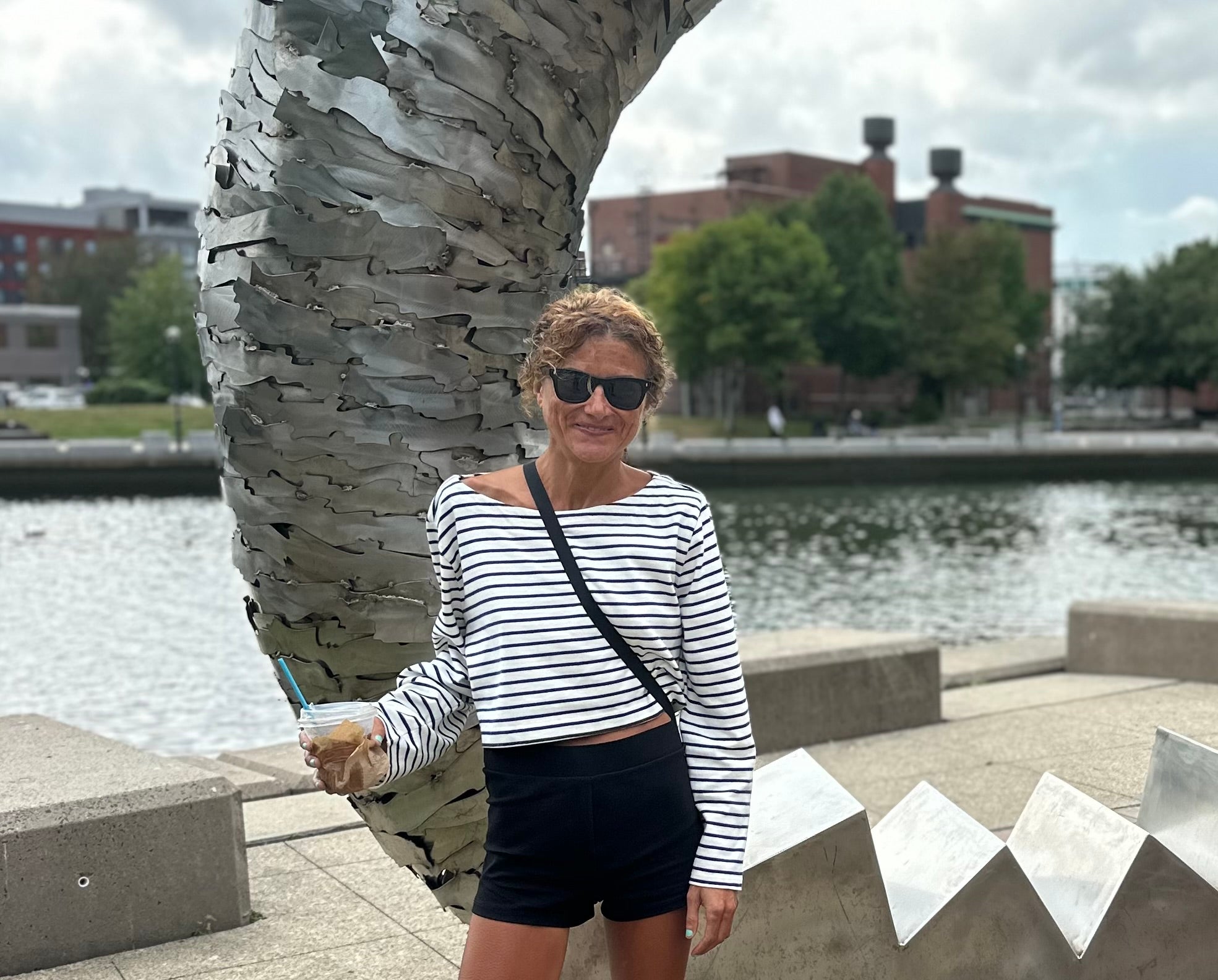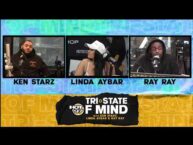No products in the cart.
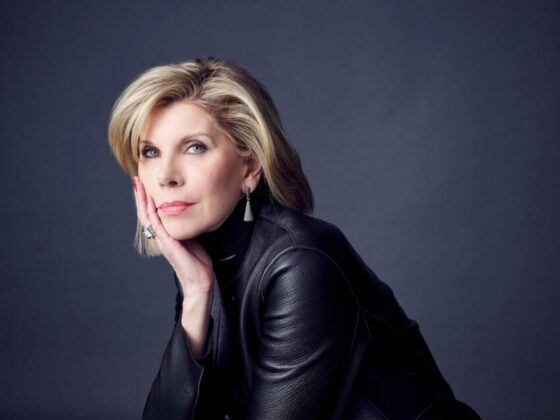
Discussing ‘The Gilded Age’ with Christine Baranski
The New Englander teases the show’s season finale, talks about the possibility of “Mamma Mia 3” — and shares her own remarkable true story that feels lifted from “The Gilded Age” itself.
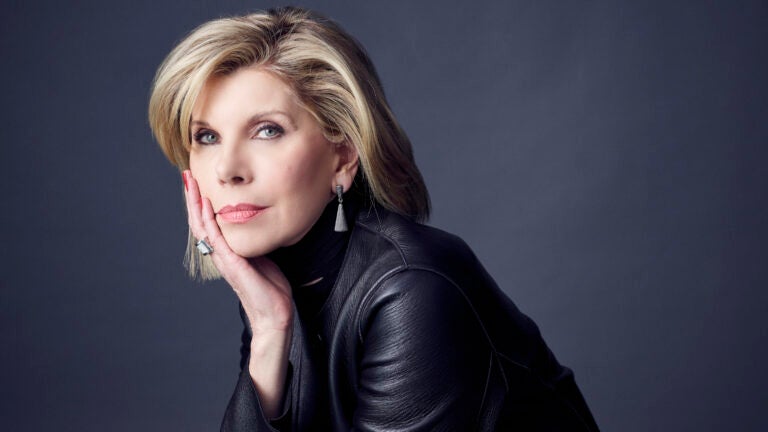
It’s a sunny late afternoon, when I call Christine Baranski, who is at The Elms mansion in Newport, Rhode Island, looking out a window.
“I’m looking out at lovely boats on the harbor. I have never been to Newport in the summer. I’ve only been here when it’s cold,” the actor muses in her signature laid-back sophisticated Baranski-style of speaking that I’m sure you can hear in your head as you read this.
With the Season 3 finale of HBO’s “The Gilded Age” airing Aug. 10, and news that HBO renewed the series for season 4, the New Englander is at The Elms — one of seven Newport mansions used as filming sites for the Emmy-winning period drama — for a sold-out Thursday discussion.
Advertisement:
“Spoiler alert — our season finale is in the ballroom at The Elms, and it’s quite something,” Baranski, 73, tells me.
The Emmy-winner and longtime Connecticut resident plays Agnes van Rhijn on the award-winning series from “Downton Abbey” creator Julian Fellowes.
Between a press conference, photos, dinner and discussion, Baranski took time to talk to me on the phone about all things Gilded Age, and her own family history, which feels lifted from an Edith Wharton novel.
I’ll let her tell the story below, but here’s some background:
Baranski’s late husband, Matthew Cowles, had a Great Aunt Bessie, born Elizabeth Wharton Drexel, who was “quite the Gilded Age grand dame,” Baranski tells me.
Advertisement:
Drexel married Henry Symes Lehr, a closeted gay man, Baranski says, who married her for her money.
In a 1935 issue of The Atlantic, an article titled “A Bird in a Gilded Cage” hailed Aunt Bessie’s 1935 biography of her late husband, “King Lehr and the Gilded Age,” as contributing “to the social history of twentieth-century America all the wealth of detail (more accurately, all the detail of wealth) that contemporary memoirs are so often content to allude to shyly in passing.”
Julian Fellowes: This is amazing Season 4 material.
A native of Buffalo and graduate of Juilliard, Baranski is a Tony winner and Emmy winner, among a slew of other awards. You may know her from blockbusters like “Mamma Mia!” or “Chicago” or any number of shows including “Cybill,” “The Big Bang Theory,” “The Good Wife,” “The Good Fight,” or currently on Hulu’s “Nine Perfect Strangers” with Nicole Kidman — I’ll stop there.
What’s striking, what I’ve never come across before in hundreds of artist interviews, is her elocution. Later, I won’t have to delete a single “like,” “um,” “you know”— as most all of us humans are want to do in conversation. Baranksi speaks on the phone as if she’s on stage. Every word carries weight.
Advertisement:
We talked “The Gilded Age,” the Gilded Age, family drama, a motorcycle named Lucifer, last week’s buzzy episode — and the possibility of “Mamma Mia 3.”
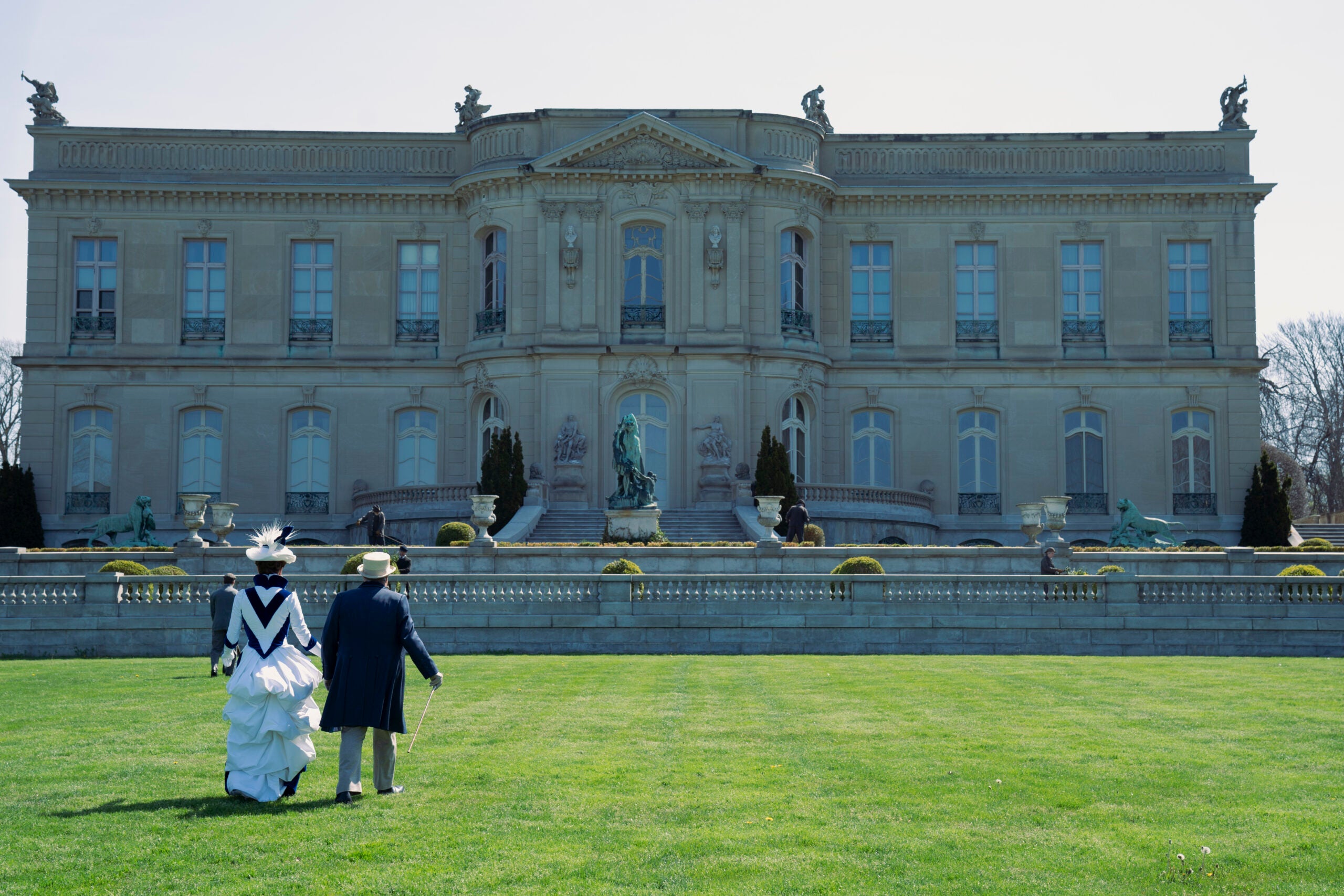
So you’ve filmed at the Elms before. I read there are six other Newport locations?
The first season we shot in the ballroom of The Breakers. I think Chateau-sur-Mer is where I film my bedroom scenes. My character has not been to all, but yes, I bet there are seven locations. We also shoot in Troy, and Long Island, of course. My townhouse is in Brooklyn on a sound stage.
What’s your favorite Newport spot?
The Elms is the most beautiful mansion. In my opinion, it’s the most graceful European mansion. It’s not as over-the-top as the Breakers. [laughs.]
Also, there’s a portrait [at the Elms, by Giovanni Boldini] of my late husband’s Great Aunt Bessie — Elizabeth Drexel Lehr. That’s something I didn’t know until I started shooting “The Gilded Age.”
Right, you’ve got an interesting family connection to the Gilded Age through Matthew’s family.
Matthew’s Great Aunt Bessie was much a part of Gilded Age society. She wrote several books. She was married to Harry Lehr. He was charming and dashing and ever so funny, and she got talked into marrying him. In fact, I think she was rather in love with him.
Advertisement:
On their wedding night, dinner was waiting, she had her wedding night gift for him all prepared, and he announced to her that he had no intention of ever sleeping with her. That she revolted him, and that he only married her for her money.
Oh my God.
They remained married for 28 years, and needless to say, he was a closeted gay man. She had a miserable life, as you can imagine. Her mother, Lucy Wharton Drexel was a devout Roman Catholic, as were all the Drexels, and was horrified by the idea of divorce. As were all people in the Gilded Age — you just didn’t get divorced.
But this marriage was never consummated, and Bessie fell in love with another man she met in the rounds of society. She called him “Mr. X.” She never revealed who he was. But she was deeply in love, and knew that she could get an annulment because there was no consummation.
She went, finally, to tell her mother the truth about her marriage. But when she arrived at the family estate in Pennsylvania, the maid said, “Please don’t upset your mother, because she’s very ill and very frail.” So poor Aunt Bessie came close to telling her mother, then simply didn’t have the heart to do it because she knew it would devastate her mother.
This should be a screenplay.
She remained in that marriage until her mother died. Then she began the process of trying to end the marriage to marry this Mr. X, except he died. It was Harry Lehr who handed her the newspaper announcing the death of Mr. X — and he had circled it with a pen.
Advertisement:
So he knew Mr. X.
He knew Mr. X.
Wow.
But they remained married and moved to Paris, they had something to do with ambulances during World War I. Her book is a wonderful chronicle of life in the Gilded Age. I’ve read so many books about the Gilded Age and they often quote Elizabeth Drexel Lehr as a good source.
What was life like?
A whirlwind. It all sounds rather exhausting to me. Right about now, Newport in the summer was endless parties and people trying to outdo each other. Women were always trying to outdo each other. And they would eat at 12 o’clock at night! It was insane, the level of partying.
And Bessie’s father Joseph was a Gilded Age banker. He, along with his brother, Anthony Drexel, went into business with a man named JP Morgan and they had a rather successful go of it.
[laughs] I’d guess so.
Joseph was rather not into being a successful capitalistic businessman and left it to Anthony. Joseph was more interested in philanthropy. He’s a founding member of the Metropolitan Museum, the Metropolitan Opera. He bequeathed his collection of old musical manuscripts to the New York Public Library. His bust is in the Library of the Performing Arts.
This family history could be a TV show itself.
Certainly I think Aunt Bessie’s story could constitute some of Season 4. Her experience — so many of these women did marry gay men. For instance, her sister Josephine, Matthew’s grandmother, also married a gay man. He slept with Josephine twice, produced two daughters from those two nights. And otherwise, rather squandered her fortune. She was rather like a tragic Henry James heroine, who lives a lonely life because she’s been used for her money.
Advertisement:
Josephine and Bessie could be characters in Henry James or Edith Wharton novels.
Absolutely. So when did you discover all this?
I didn’t know so much when I married Matthew. Matthew was a rather dashing actor I met while doing a production of Ibsen’s “Ghosts” back in ’82 or ’83. One night, he asked if I wanted to ride home on his BMW motorcycle. I was terrified on the Williamsburg Bridge, riding on a motorcycle — he named all his motorcycles — named “Lucifer.” So you can imagine.
[laughs] Right.
The rest as they say is history. The black leather motorcycle jacket, the shaggy blonde hair — he was so dashing and sexy and so interesting.
He’d talk about his family — but OK, Joseph Drexel, whatever; I wasn’t that curious. Then he took me to his childhood home in the little town of Bethlehem, Connecticut. He inherited the home, and there were family heirlooms and rather beautiful European furniture in this 18th century farmhouse. I went up in the attic and there were these paintings.
You said they turned out to be family portraits.
Yes, so all of this began unveiling itself, revelations about his family. When I heard that Julian wanted to do an American version of “Downton Abbey,” I jumped. I thought I would do anything to be in that.
I happened to meet Julian at an HBO afterparty and had the temerity to introduce myself and tell him about my late husband’s family. I said if he ever did the Gilded Age, I’d be interested.
Advertisement:
Years later, I got a call about playing this character, Agnes van Rhijn, and that Julian had me in mind for this character. So here we are. It’s almost meant to be.
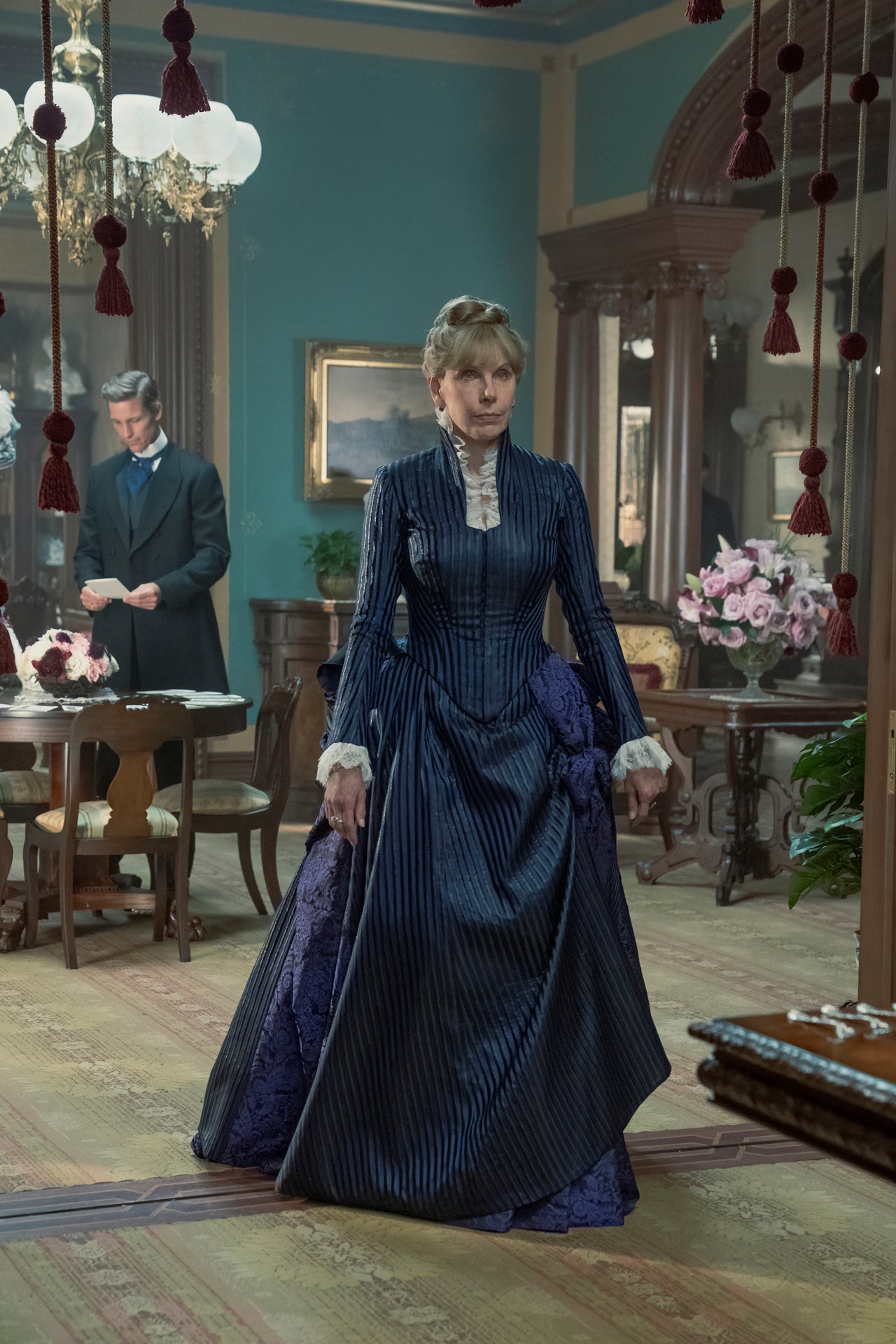
Seriously. So the character of Agnes was created for you? Or how much did you bring to it?
Well, I think Julian had me in mind. He said, “You were born to play this role.” [laughs] But I don’t think he wrote it for me. He wanted me to play this old-money doyenne, who is very certain about how things should be done. She’s old money and old society.
There was a powerful episode last week with Agnes and her son Oscar, who is gay. We were just talking about what you couldn’t talk about back then. Your expressions, your silence was so powerful.
The scene was very powerful because it’s the love that dare not speak its name. Agnes never acknowledged, remotely, that that was a possibility. And yet, we know she knew. All of that is expressed in the silence. I thought Blake [Ritson who plays Oscar] did a magnificent job. I was just reacting off him. It was heartbreaking.
I have to ask: Do you know what’s going on with “Mamma Mia 3”?
Oh my god! I just had a long dinner with Judy Craymer, the producer. She does have plans, I must tell you. She’s got some roadblocks, but, boy, she’s determined to do it. So it was jazzy to talk to her. [laughs] It’s exciting.
Advertisement:
Lauren Daley can be reached at [email protected]. She tweets @laurendaley1, and Instagram at @laurendaley1. Read more stories on Facebook here.
Sign up for the Today newsletter
Get everything you need to know to start your day, delivered right to your inbox every morning.

